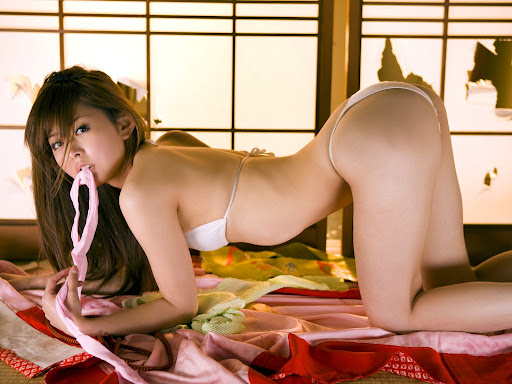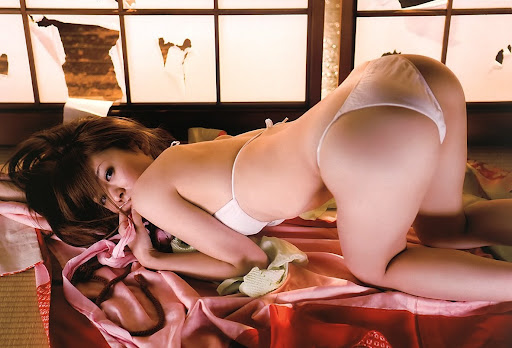 Spoilers for the debut of "Mad Men" coming up just as soon as I smoke up a pack of Old Golds...
Spoilers for the debut of "Mad Men" coming up just as soon as I smoke up a pack of Old Golds...Well, that was fun, wasn't it? I mean, there's some problem with subtlety from time to time (gay Salvatore butching it up at the burlesque club, the Nixon/Kennedy and Xerox jokes), and I know I wasn't the only critic who was confused at first when AMC asked us not to spoil the ending with January Jones (since we didn't think it was surprising enough to qualify as a twist), but beyond that... pure coolness.
I spent a while with Matthew Weiner at AMC's press tour party (a swinging affair at the Friar's Club, with Jeff Goldblum and his jazz band playing songs from 1960), and when I mentioned that I hadn't seen a particular episode, he smiled and said, "You're gonna love it. It's about time travel." I cocked my head, raised my eyebrows and tried to figure out whether he'd had a few too many Old Fashioneds, or if he was taking the show into David Lynch territory.
But when I finished the episode in question, I understood what he meant. Where some shows set in the past can't help but feel like it's a bunch of actors playing dress-up, "Mad Men" made me feel like I was getting a glimpse of what New York of that era really looked, sounded and smelled like.
It helps that, with the exceptions of Elisabeth Moss and John Slattery, I don't have much of a history watching these actors, so I didn't spend a lot of time admiring how the hair and makeup people had transformed them. (From what little I remember of Connor-era "Angel," Vincent Kartheiser is unrecognizable as Pete the account rep weasel.) But there's a real commitment to period detail: the clothes, the hairstyles and, especially, the cigarettes and attitudes.
The two come together in the opening scene, where we meet our hero Don Draper (Jon Hamm, looking like he's on his way to audition for "Superman") working on an ad campaign for Lucky Strikes, now that the government has ruled that tobacco companies can't promote their products as healthy. He asks a black waiter named Sam why Sam smokes Old Golds; Sam's not used to rich white customers trying to engage him in conversation, and Sam's boss automatically assumes Sam is harassing Don. (Because even in 1960 Manhattan, why would a man like Don want to talk to a man like Sam?) Don waves the boss away without exactly getting indignant on the black waiter's behalf, and the two men talk tobacco. Sam explains that he smokes Old Gold because that's what they gave him in the Army (an early crossover between government and corporate marketing interests), and as they banter back and forth, he mentions that his wife wants him to give up smoking because of an article she read in Reader's Digest, Sam and Don both laughing at how ladies just love their magazines. Don scans the crowd and sees men and women of all ages (but one color) smoking and laughing, and he wonders why he can't feel as happy as they all look.
Give me a great opening scene(*) and I'll stick with a show through a lot of faults. "Deadwood," for instance, had that amazing sequence where Bullock holds off a lynch mob so he can hang a horse thief under the banner of law, and because of that, I didn't get too worked up that I was having trouble keeping track of all the characters for the next few episodes. The "Mad Men" intro is so perfect in the way it takes you into its world and lays out all the series' key themes -- marketing, casual racism and sexism, the ennui that can come even when you have it all -- that I'll forgive the copier joke, or the fact that I figured out Don was married as soon as Midge (Rosemarie DeWitt, who was the best thing about "Standoff") suggests she'd make a good ex-wife.
(*) A kick-ass title sequence helps, and "Mad Men" has one, that sequence of Don's silhouette falling through various idealized illustrations of late '50s life before winding up seated in an art deco chair, his back turned to us, a cigarette dangling from his hand. Weiner says the idea came from director Alan Taylor, who took a look at Hamm and said, "Have you seen the back of this man's head? Have you seen what that is, what presence that is? Who is this person, this mystery?" (Note that the first time we see the flesh and blood Don, it's from that same vantage point.)
There's a lot to digest here, a lot of characters to meet, a lot of casually offensive dialogue to adjust to (I'm fond of Don telling Rachel Menken, "I'm not going to let a woman talk to me like this," but almost every line uttered by Pete and his cronies does the same trick), and Weiner uses the patented pilot device of My First Day At The New Job to smooth the transition, turning Moss's Peggy into our eyes and ears -- at least until she winds up inviting the engaged Pete into her apartment, the aftermath of which I'm grateful we didn't have to see nor hear.
I could go on for a while here, but I've got a press tour to cover, and I already wrote a thousand or so words about the show in yesterday's column, so I'll hit a few minor points and then turn it over to you.
- Though a few characters come across as very broad here, I've now seen the first four episodes, and if the Pete spotlight in episode four is any indication, Weiner's going to get around to plumbing everyone's hidden depths by the end of the season.
- "It's Toasted" was an actual Lucky Strikes slogan, but one that dates back to 1917. Over the run of the series, Weiner's going to be playing a little loose with this area, using actual brands but either inventing new campaigns or giving Don credit for other men's work.
- Nice to see John Cullum as the Lucky Strikes boss, the first of some very cool guest-casting that the series will use. (Also, did you catch Mel from "Flight of the Conchords" as one of the switchboard operators? She's the one in the middle.)
- I really loved Peggy's visit to the judgemental, chain-smoking gynecologist. Just thought that warranted mention.
















No comments:
Post a Comment